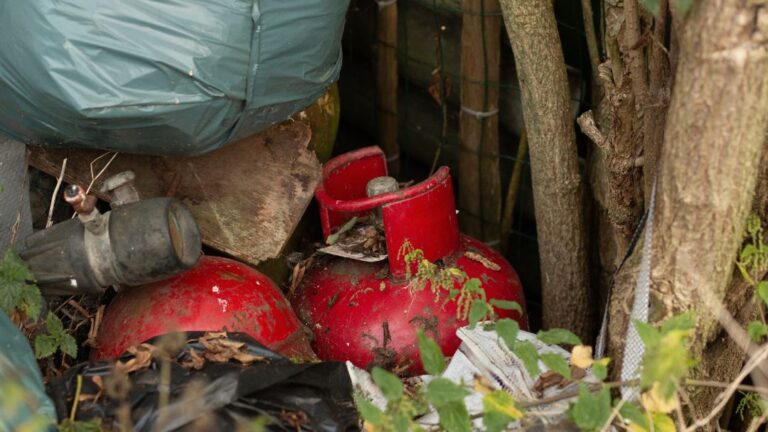Build a Safe Hazardous Waste Storage Facility
- Jonathan R.
- August 30, 2024
Table of Contents
Building a hazardous waste storage building is no small feat. It’s a task that requires careful planning, detailed execution, and a commitment to safety. This article will guide you through the essential steps and considerations for creating a safe and compliant hazardous waste storage facility. Read on to learn more about this critical topic.
The Importance of a Safe Hazardous Waste Storage Building
Creating a hazardous waste storage building is vital for environmental protection and public health. Hazardous waste includes materials that can be toxic, flammable, corrosive, or reactive.
Improper storage can lead to severe consequences, including environmental contamination, health risks, and legal liabilities.
Regulatory Compliance
First and foremost, understand the regulations. Every country and region has specific laws governing hazardous waste storage. Familiarize yourself with local, state, and federal regulations. Non-compliance can result in hefty fines and legal action.
Agencies like the Environmental Protection Agency (EPA) in the United States provide guidelines and standards for hazardous waste storage. Adhere to these regulations meticulously.
Site Selection
Choosing the right location is critical. The site should be accessible yet remote enough to minimize risk to populated areas. Consider factors like groundwater proximity, natural disaster susceptibility, and local zoning laws. Conduct a thorough site assessment to identify potential hazards and mitigation measures.
Building Design
Design your hazardous waste storage building with safety in mind. Incorporate features such as:
- Secondary Containment: Ensure spills are contained and do not escape into the environment.
- Ventilation Systems: Proper ventilation prevents the buildup of toxic fumes.
- Fire Suppression Systems: Install automatic fire suppression systems to handle potential fires.
- Access Control: Restrict access to authorized personnel only.
Work with architects and engineers who are experienced in hazardous waste storage. Their expertise is invaluable in creating a facility that meets all safety and regulatory requirements.
Storage Containers and Materials
Use appropriate storage containers. Containers should be compatible with the hazardous materials they hold, durable, and resistant to corrosion and leaks.
Label all containers clearly with the contents and associated hazards. Use materials like steel or high-density polyethylene, which are standard in the industry.
Safety Protocols and Training
Implement rigorous safety protocols. Ensure all staff are trained in hazardous waste handling and emergency response. Regular drills and continuous education help maintain a high level of preparedness.
All stored materials should have safety data sheets (SDS) accessible. These documents provide essential information on handling, storage, and emergency measures.
Monitoring and Maintenance
Regular monitoring and maintenance are crucial. Inspect storage containers and facilities routinely for signs of wear, damage, or leaks. Implement a maintenance schedule to ensure all safety systems are operational.
Use technology like sensors and alarms to promptly detect leaks or other hazardous conditions.
Waste Minimization and Recycling
Consider waste minimization strategies. Reducing the amount of hazardous waste generated can significantly lower storage risks and costs. Explore recycling options for materials that can be safely reused or repurposed. This approach aligns with sustainability goals and regulatory requirements.
Emergency Preparedness
Prepare for emergencies. Develop an emergency response plan detailing actions to take in case of spills, leaks, fires, or other incidents. Coordinate with local emergency services to ensure they are aware of the facility and can respond effectively. Conduct regular drills to test the plan and make necessary adjustments.
Documentation and Reporting
Keep detailed records. Documentation is essential for regulatory compliance and operational efficiency. Record all hazardous waste types, quantities, storage locations, and handling procedures.
Update these records regularly and ensure they are easily accessible for inspections or audits.
Leveraging Technology
Utilize technology to enhance safety and efficiency. Implement systems for real-time monitoring of storage conditions. Use software to manage inventory, track waste generation, and streamline reporting. Technology can also improve communication and coordination during emergencies.
Cost Considerations
Budgeting is a significant aspect of building a hazardous waste storage facility. While safety and compliance are paramount, managing costs effectively is essential—factor in initial construction costs, ongoing maintenance, staff training, and regulatory compliance.
Investing in quality materials and systems can save money in the long run by preventing accidents and ensuring smooth operations.
Partnering with Experts
Collaborate with experts. Engaging consultants specializing in hazardous waste management can provide invaluable insights and assistance. Their expertise can help navigate complex regulations, optimize facility design, and enhance safety.
Community Engagement
Engage with the local community. Transparency and communication can build trust and mitigate concerns. Inform residents about the safety measures in place and the facility’s benefits. Address any questions or issues promptly and openly.
Conclusion
Building a safe hazardous waste storage facility is a complex but essential endeavor. Prioritizing safety, compliance, and sustainability ensures the protection of the environment and public health. By following these guidelines and working with experts, you can create a facility that meets all regulatory requirements and operates efficiently.
At Safety Storage Inc., we specialize in designing and constructing state-of-the-art hazardous waste storage buildings. Contact us today to learn more about our services and how we can help you achieve your safety and compliance goals.
Share your thoughts in the comments, spread the word, and explore our related services to ensure the safe handling of hazardous waste.
Read More:
Hazardous Waste Storage Building

Jonathan Reed
Jonathan Reed specializes in writing in-depth, data-driven content on industrial waste management, regulatory compliance, and environmental sustainability. With expertise in hazardous waste disposal, OSHA guidelines, and waste reduction technologies, he provides actionable insights for businesses navigating complex waste management challenges.



